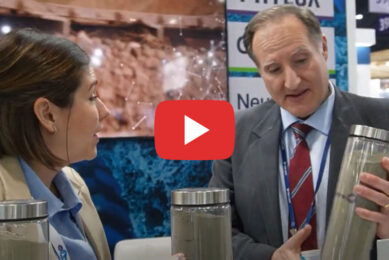Looking at growth promoters through a different lens
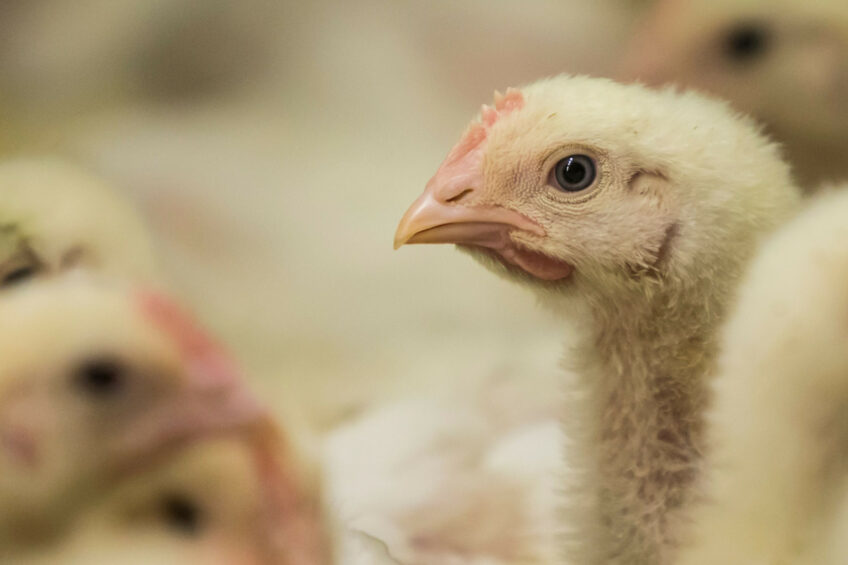
With antibiotic growth promoters on the way out, livestock producers face new health and performance challenges. A holistic approach that supports gut health, immunity and pathogen control offers a way forward.
“Sometimes we just need a new angle to see things.” This simple quote by Derek Balkman offers a mindset that applies perfectly to how the food animal production industry should approach natural alternatives to antibiotic growth promoters. As the industry has transitioned toward more responsible antibiotic use, including growing demand for antibiotic-free production, new challenges have emerged, leading to a significant impact on animal health, welfare and performance. This has forced the industry to seek alternatives that can help mitigate challenges such as necrotic enteritis and other bacterial diseases.
A new angle
Most efforts have focused on finding antibiotic replacements, products with similar properties to antibacterials, but we need to take a “new angle” to effectively address this need. A fresh approach should adopt a holistic view, rather than focusing solely on pathogenic bacterial organisms that impact health and performance. This broader approach should also prioritise protecting and supporting the cells of the intestinal tract and the immune system. A healthy gut and a competent immune system improve the animal’s ability to prevent pathogens from invading intestinal epithelial cells and the circulatory system, thus reducing the risk of infection.
Varium
For any AGP or AGP-replacement product to be effective, it must specifically target pathogenic bacteria. Traditional or commonly used natural products can effectively protect against pathogens via bactericidal properties. However, many act via broad-spectrum action and thus can also target beneficial bacteria. Pathogens such as Clostridium perfringens, Salmonella spp., and Escherichia coli use fimbriae to adhere to the intestinal enterocytes.
A product like Varium (Amlan International), which contains a proprietary, thermally processed calcium montmorillonite, can bind the fimbriae of these bacteria (Figure 1), reducing their presence in the intestine (Table 1). This reduction in pathogenic load allows beneficial bacteria, such as Lactobacillus, to thrive with less microbial competition.

Maintaining a more balanced intestinal microbiota is essential for improving gut health. It supports the digestion of feed, facilitates the synthesis of nutrients such as vitamins and short-chain fatty acids, enhances nutrient absorption, and ultimately improves overall animal health and performance.
Pichia yeast ingredient
As part of a more holistic approach to pathogenic management, Varium contains a proprietary whole Pichia yeast ingredient that further enhances the bacterial-binding properties of the clay, adding another layer of targeted support to gut health. The whole Pichia yeast cells can also provide much-needed support and enhancement of the immune system with a high concentration of 2 key components of their cell wall: mannan-oligosaccharides (MOS) and β-glucans. MOS actively binds to receptors of certain pathogenic bacteria, preventing them from attaching to the epithelial cells of the intestines. This additional binding affinity plays a key role in reducing the pathogen load in the gut and further allows beneficial bacteria to thrive in a less competitive environment (Table 1).
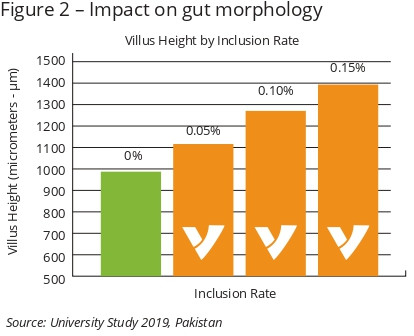 In addition, beta-glucans from the yeast component add to the holistic approach of treatment by moderating the natural immune response of the animal. An unbalanced immune response to a disease challenge uses an enormous amount of energy that is diverted away from weight gain and other performance parameters.
In addition, beta-glucans from the yeast component add to the holistic approach of treatment by moderating the natural immune response of the animal. An unbalanced immune response to a disease challenge uses an enormous amount of energy that is diverted away from weight gain and other performance parameters.Thus, supporting and enhancing the animal’s immune system to combat disease challenges is a critical component of Varium’s approach to managing bacterial enteritis. Beta-glucans are effective at modulating immunity by activating immune cells and increasing phagocytic cell action. This function not only helps to increase the rate at which pathogenic bacteria are removed from the intestines, but it also helps to improve the response to vaccinations that are used for disease control.
Supporting enterocytes
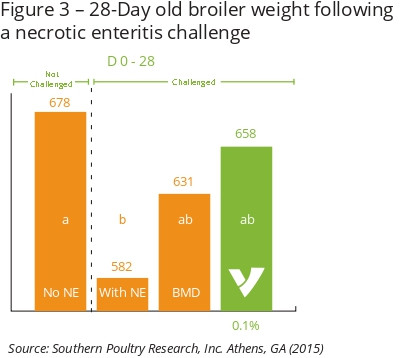 A third component when managing bacterial enteritis involves supporting enterocytes, which will inevitably sustain damage during a disease challenge. Toxins released from pathogenic bacteria degrade the integrity and function of the intestinal barrier and reduce overall animal performance. Not only will the thermally processed mineral component of Varium efficiently bind these toxins, but the inclusion of glutamic acid also plays an active role in numerous processes that support optimal gut health and function.
A third component when managing bacterial enteritis involves supporting enterocytes, which will inevitably sustain damage during a disease challenge. Toxins released from pathogenic bacteria degrade the integrity and function of the intestinal barrier and reduce overall animal performance. Not only will the thermally processed mineral component of Varium efficiently bind these toxins, but the inclusion of glutamic acid also plays an active role in numerous processes that support optimal gut health and function.
It is the preferred energy source utilised by enterocytes for cell repair, rapid cell replication, maintaining the epithelial tight-junctions, and enhancing the health and integrity of the intestinal mucosa.
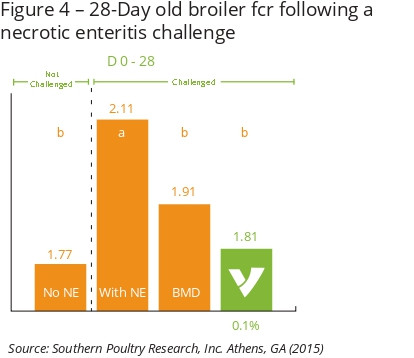
Helping to replenish and restore damaged enterocytes minimises the negative effects caused by bacteria and mycotoxin challenges alike (Figure 2). This prevents systemic spread of these pathogens to avoid performance-diminishing side effects such as leaky gut and ultimately, diarrhoea.
All this while promoting optimal absorption of nutrients, and thus improving performance, health, and wellbeing. Backed by over 10 years of animal trials, research shows Varium enhances both feed conversion and weight gain (Figure 3 and Figure 4). Boosting these metrics is crucial for maximising production efficiency for producers worldwide.
Holistic approach
Through synergistic actions, Varium provides a holistic, sustainable approach to managing bacterial enteritis, compared to relying on antibiotics.



